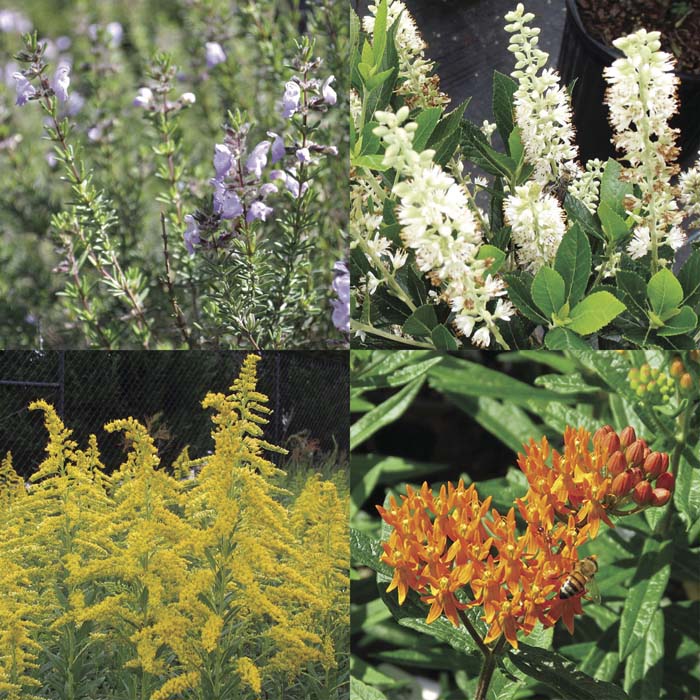Pollinator protection efforts focus on plant availability
Published 12:00 pm Thursday, February 13, 2020

- The first annual Georgia Pollinator Plants of the Year chosen by the State Botanical Garden of Georgia are (clockwise from top left) Conradina, also known as wild rosemary; Sweet Pepperbush; Butterfly Weed; and Downy Goldenrod.
As part of an ongoing effort to help support Georgians use more native plants in their landscapes, University of Georgia Cooperative Extension has partnered with the State Botanical Garden at the University of Georgia, the Georgia Green Industry Association and the Georgia Department of Agriculture to launch the state’s first Pollinator Plants of the Year Program.
“We are excited to be part of the effort to get this amazing program in place for Georgia gardeners,” said Becky Griffin, UGA Extension school and community garden coordinator and pollinator protection expert. “Extension has strengths. The State Botanical Garden of Georgia has strengths; the Department of Agriculture has strengths and the private sector has its strengths. We have a better chance of meeting our goal of providing more pollinator habitat if we work together.”
The collaboration will connect Georgia’s robust greenhouse industry with experts in native plant cultivation and pollinator health to produce more ready-to-plant natives and to encourage Georgians to turn part of their home landscape into pollinator habitat. This year the groups will be reaching out to greenhouse growers to encourage them to produce specially selected landscape plants. Next year the focus will be on teaching gardeners how to incorporate and maintain the pollinator-friendly plants.
The State Botanical Garden at the University of Georgia announced its first Georgia Pollinator Plants of the Year at the Georgia Green Industry Association Wintergreen conference to encourage green industry professionals to suggest that businesses, parks, schools, city and county governments, and home gardeners add pollinator-friendly native plants to their landscapes.
“This program brings together conservation and horticulture, which don’t function independently—one supports the other,” said Lauren Muller, conservation outreach coordinator at the State Botanical Garden and coordinator of the Georgia Pollinator Plants of the Year program. “It is important for people in the green industry to think about conservation, the work we are doing and how we can tie it back into the larger ecological system.”
The 2021 Pollinator Plants of the Year are:
Spring bloomer — Conradina (Conradina canescens), also known as wild rosemary, is a fine-textured, evergreen, woody shrub in the mint family with aromatic, needle-like leaves. In spring, the plant is covered in small lavender flowers with purple-spotted throats. It supports many native bees and other pollinators and is ideal for container gardening or garden walls.
Summer bloomer — Sweet Pepperbush (Clethra alnifolia) is a small, deciduous, densely branched shrub ideal for rain gardens. Panicles of white flowers give off an intoxicating fragrance in the heat of summer and support many native bees.
Fall bloomer — Downy Goldenrod (Solidago petiolaris) — not to be confused with ragweed, the true culprit in many allergies — is one of the shorter goldenrods, standing between one and three feet tall. From August to October, the flowers bloom in dense, spiky clusters, creating a gorgeous yellow plume. This is an excellent plant for bees, wasps and at least 112 species of butterflies and moths.
Georgia native — Butterfly Weed (Asclepias tuberosa) is a drought-tolerant, herbaceous perennial wildflower that reaches one to two feet tall and is excellent for sunny borders, meadows and containers. This plant serves as the larval host for the Monarch Butterfly, Grey Hairstreak, Queen Butterfly and Milkweed Tussock Moth and provides abundant nectar for many insects and hummingbirds.
These plants should be available in Georgia garden centers in late 2020 and early 2021.




